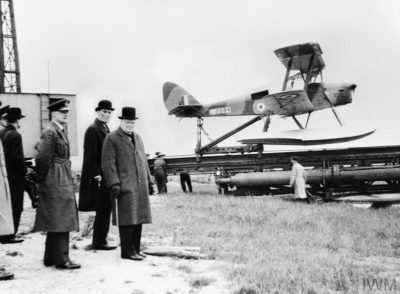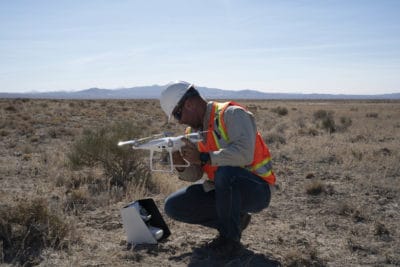
Drone technology isn’t new, but the applications constantly change on where they can be used and how.
The first unmanned aerial vehicles developed in Britain and the USA during the First World War: Britain’s Aerial Target and the USA’s aerial torpedo known as the Kettering Bug. These pilotless vehicles were actual aircraft with no onboard passengers that were radio-controlled. The purpose of these initial drones was to act as targets for training purposes. It is thought the term ‘drone’ formed at this time. The name drew inspiration by the name of these models, the DH.82B Queen Bee.
Drones have come a long way over the last 100 years from being full-size planes to drones that can fit into a small backpack with just as much (if not more) capability. Different types of sensors serve their purpose on drones from electro-optic (video/photo) to highly specialized sensors for specific needs such as LiDAR and radiation sensors.

Using Drone Technology Today
Now is a great time to be using this developing technology for mineral exploration and here is why:
⦁ Early-stage Exploration: Gathering ortho imagery with submeter accuracy can help your sampling program data visualization with high resolution imagery. We can even add the sample results into the final product, giving you and your team the most visibility of your project.
⦁ Data for Permitting: Current ground conditions, previous disturbance, reclamation planning, off-road travel, even documentation of historical or sensitive features. Flying a done before and after an exploration program can help ease the permitting process before disturbance and after to show real-time data of actual disturbance.
⦁ Drilling Programs: Create maps to plot program and drill holes in 3D space.
⦁ Future and Current Mine Site Planning, Stockpile Planning/Measuring: Calculate volumetrics with high accuracy.

It’s one thing to collect the drone data and it is another to compile it into a usable format. Compiling this data can be a daunting task as there are many different platforms to choose from. And pending on what your deliverable needs are, you do not want to pay for what you do not need.
User-Friendly Format
Burgex makes it simple for you to view and export your data in a user-friendly format, ready for you to make specific decisions for your project. We work with Propeller software to ‘stitch’ the images together into an orthomosiac. Once merged into an orthomosaic digital terrain model, 3D point cloud, gradient map, and contours go into extraction. These products serve to calculate volumetrics, road grade, accurate ground control, and full features for collaboration across teams. This data remains accessible from anywhere in the world and can add massive value to your project.
In addition, hiring a drone company can be a costly expense. Most are not comfortable with working in remote locations without cell coverage. This increases their mobilization and demobilization costs. Fortunately, Burgex works in remote and desolate areas. Adding UAV data to your initial exploration can help reduce the costs of your overall project.
